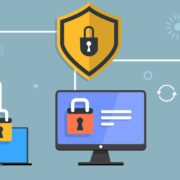How To Integrate Software Applications With Enterprise Level Efficiency
There are a few important steps to integrate software applications with enterprise level efficiency. Successfully integrating software solutions is an incredibly common challenge that many companies are currently facing. After all, successful application adoption requires you to completely transform your operational processes. Fortunately, there is a broad spectrum of available options to help you confidently set up your business’s systems, tools, and software application products. This way, you can lower information technology spending, foster real-time visibility, and drive user-driven innovation. To help you get started, read on to learn about how to integrate software applications with enterprise level efficiency.
Consider The Type Of Software You Need
First off, consider the type of software that your business needs. There are plenty of innovative forms of enterprise software commonly used for daily business operations. For example, you may want to set up project management, applicant tracking, or automated recruitment software for your organization. In addition, evaluate the benefits of customer relationship management (CRM), internal, and external communication software options. If you are looking to optimize your bookkeeping procedures, consider integrating payroll processing or tax planning applications. In fact, your organization could even revamp operations through sales, public relations (PR), or digital marketing software. Moreover, there are several different types of software that will make your life easier. Certainly, evaluating your software application needs and requirements is essential to perform integration with enterprise level efficiency.
Partner With Software Asset Management (SAM) Services
Next, partner with a reliable SAM service provider. Software Asset Management Managed Services provide you with immediate access to the personel, processes, tools, and experts that will span your entire enterprise software estate. These services help you confidently organize the purchase, utilization, and deployment of new software products. Simultaneously, many experienced services will extend to application maintenance and disposal, as well. Partnering with a trusted SAM provider, you can access experienced contract negotiation support, program GAP analyses, and routine health inspections. Of course, these trusted providers will even offer strategy, design and development services to optimize your software integration. Surely, partnering with software asset management services is pivotal to successfully integrate your application.
Set Up Software Integration Tools
Once you have done so, consider setting up reliable software integration tools. Integration tools help you successfully conduct the process of moving your business data and company operations to your new software destination. Traditionally, these tools perform data transformation, mapping, and cleansing. Adopting these systems, you can simplify administrator responsibilities, better analyses, and obtain real-time data. Of course, this will help you accelerate growth, promote scalability, and foster innovation. In fact, integration tools can enhance your data flow, simplification, and accessibility. Moreover, leveraging these solutions helps to reduce errors and accelerate IT business processes. Indeed, choosing integration tools is an essential thing to consider before scaling your business with software solutions.
Evaluate Financial Constraints
Now, you are ready to evaluate the financial constraints of setting up enterprise level software. There are several costs involved with adopting a new software product. For a start, you will need to plan for expenses associated with initial purchase, annual subscriptions, and additional user costs. In addition, you may need to calculate the anticipated costs of software licensing and support. This way, you can obtain an accurate depiction of what it takes to integrate, utilize, and maintain your enterprise application. Of course, this is important to reduce integration expenses and improve your bottom line. Absolutely, financial constraint evaluation is imperative for successful software integration.
Review Terms & Conditions
At this point, it is time to carefully review the software terms and conditions. When evaluating your agreements, pay close attention to the basis of sale, specifications, and charges for services. In addition, assess the terms of payments, as well as your rights in input and output material. Once you have done so, determine if you will be provided any return conditions, warranties, or liability options. This way, you can better understand the fine print of your written terms. Definitely, closely review the terms and conditions of your software application.
There are a few important steps to integrate enterprise software applications with enterprise level efficiency. First off, consider the different types of software you need. Next, partner with a trusted SAM service provider. Once you have done so, set up the top software integration tools. Now, you are ready to evaluate the financial constraints of integration. At this time, it is crucial to thoroughly review the terms and conditions. Follow the points highlighted above to learn about how to integrate software applications with enterprise level efficiency.
















